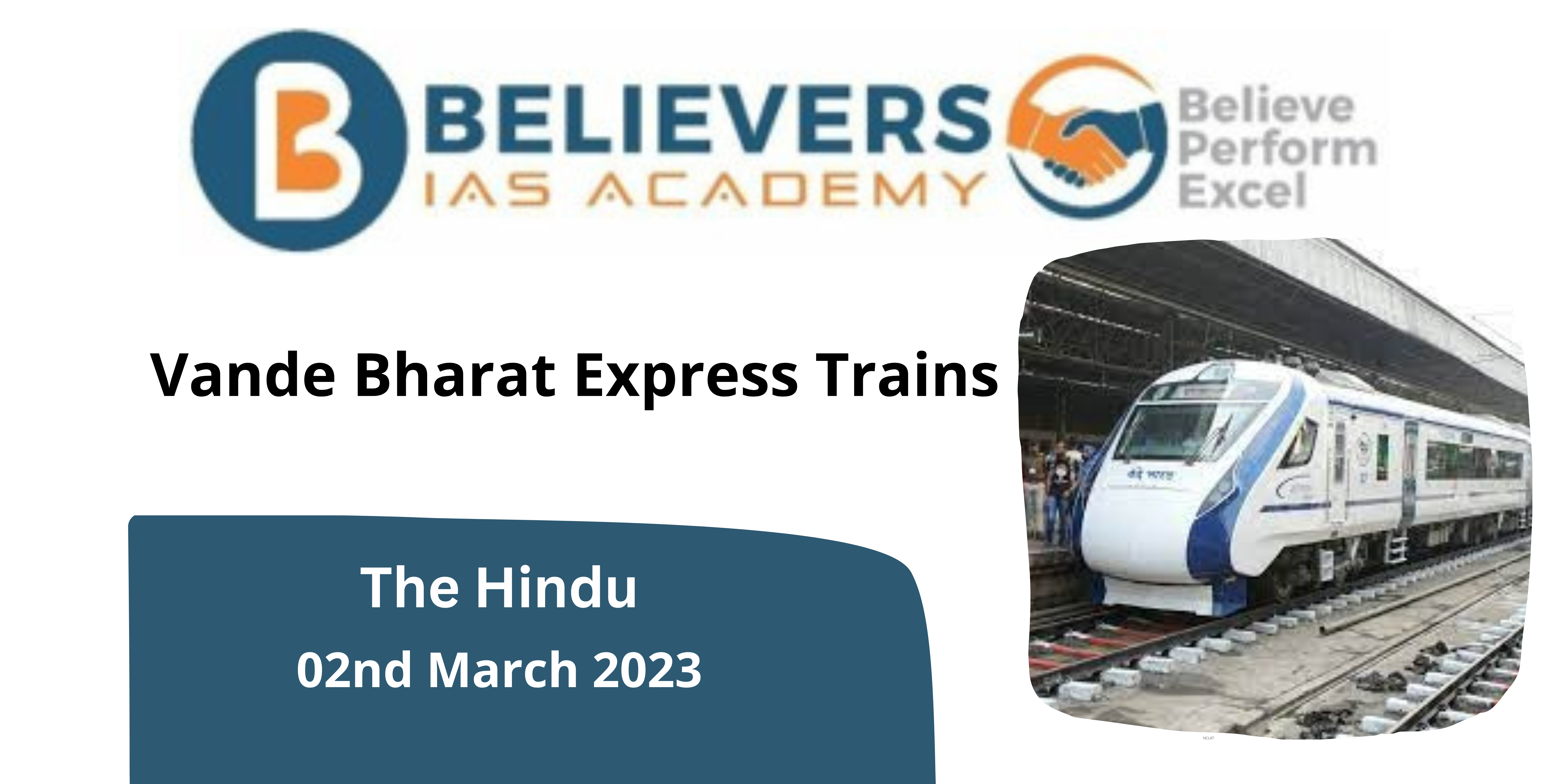Details of the Vande Bharat Express Trains:
#GS III #Infrastructure related issues
Topic Infrastructure related issues:
Context:
- The two significant semi-high-speed trainset tenders that benefited the Vande Bharat project made significant progress this week.
- It is predicted that five competitors will fulfil the requirements for producing 200 trainsets on Wednesday, almost a week after two major firms submitted their technical bids for 100 aluminium Vande Bharats—a first in India—in a tender that was published a few months ago. Three businesses have submitted bids for the 200 trainsets: the Swiss firm Stadler, the Indian firm Medha, and the world leader in rolling stock from France, Alstom.
Vande Bharat is operated by which railroads?
- This semi-high-speed, self-propelled train has been heralded as the Indian Railways’ next big development in terms of speed and passenger convenience since the introduction of Rajdhani trains.
- The first Vande Bharat was produced for about Rs. 100 crore as part of the “Made in India” programme at the Integral Coach Factory (ICF), Chennai.
- The Vande Bharat was India’s first attempt to replace the more conventional practise of using passenger carriages pulled by individual locomotives.
- The train set arrangement is intricate, but it is also quicker, easier to repair, consumes less energy, and allows for more flexibility in train operation.
- Two Vande Bharat Expresses are currently leaving New Delhi, one for Katra and the other for Varanasi.
- The 400 new trains will be constructed with “better efficiency” in mind, and some of these trainsets may be made of aluminium rather than steel.
- Because of its aluminium body, each trainset will be 40–80 tonnes lighter than a modern Vande Bharat, increasing its potential for speed and consuming less energy.
What Characterizes the Vande Bharat Railways Brand?
- These trains, known as “Train 18,” lack a locomotive and run on a distributed traction power system that provides separate power sources to each of the train’s carriages.
- The onboard WiFi, GPS-based passenger information systems, CCTVs, automated doors in every coach, rotating chairs, and bio-vacuum toilets like to those in aeroplanes are just a few of the luxuries provided to passengers in its coaches.
- It can drive at a top speed of 160 kmph thanks to speedier acceleration and deceleration, which reduces the journey time by 25% to 45%.
- Additionally, it boasts a smart braking system that regenerates electricity, lowering costs, energy consumption, and environmental impact.
What does it all ultimately mean?
- Over the next three years, 10,000–15,000 employment will be created as a result of the production of 400 of these trainset attachments.
- Around Rs 50,000 crore would be invested in the country’s rolling stock industry, which would be great for supply and component manufacturing companies among others.
- Also, it will increase the railroad’s finances and productivity.
How to Keep Going:
- A new era of travel is introduced by Indian Railways’ upgraded next-generation trains. In an era of heavy competition from low-cost airlines and well-developed road systems, the new trains can aid railways in maintaining and possibly growing their business.
- The early completion of the ambitious project and consideration of the requirement for diverse classes of travel will significantly increase the success of the Vande Bharat project.




